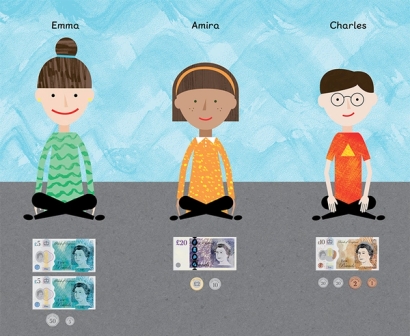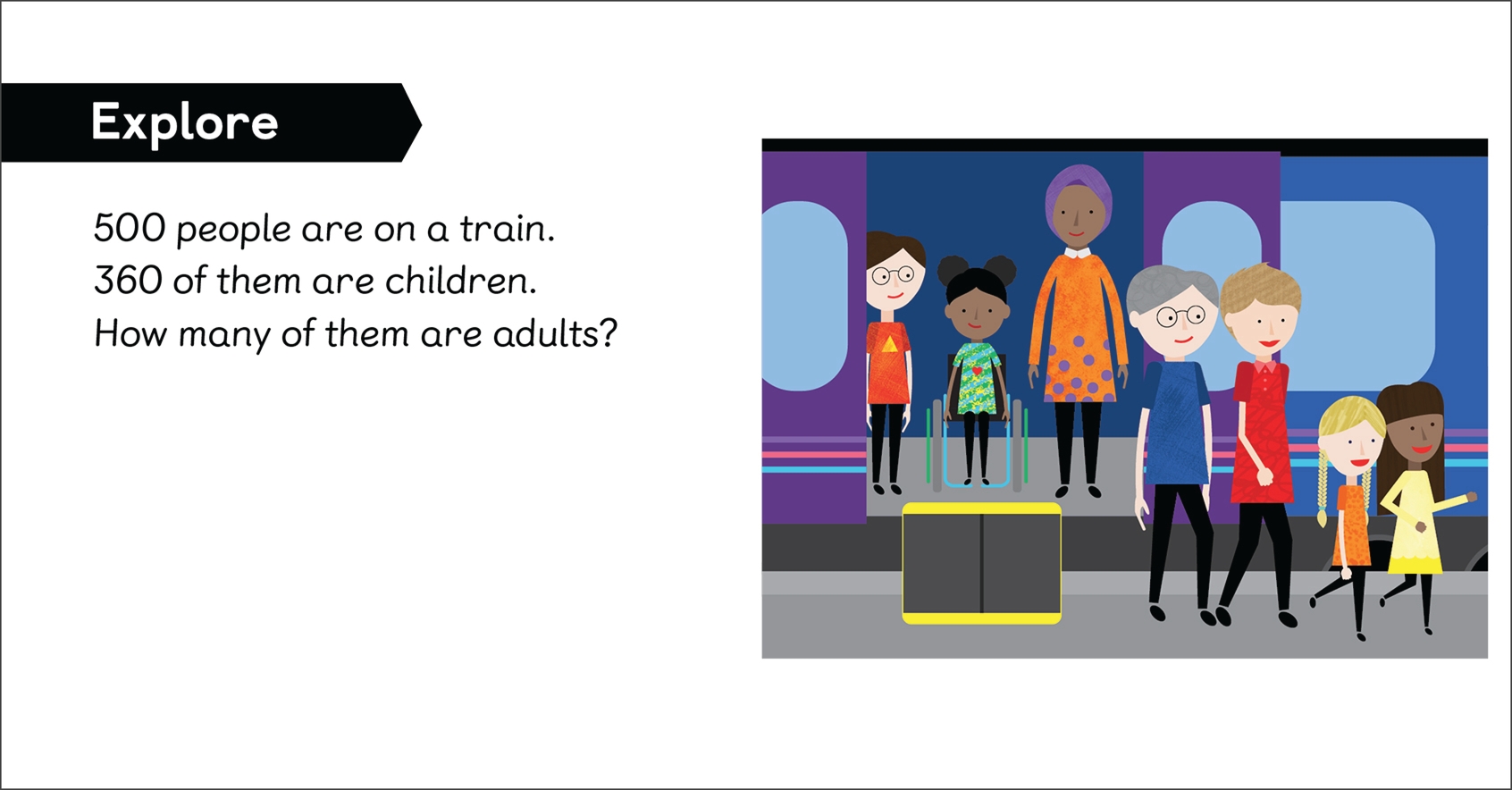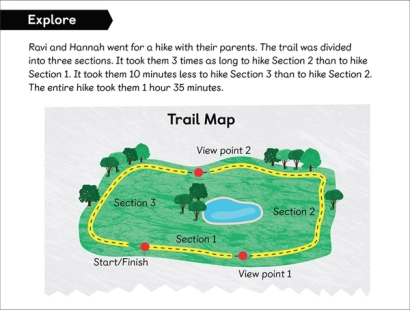Everyone Can Explore: Supporting access for all learners
Chatting is a good thing in a maths lesson, not a bad thing.
Every child deserves the opportunity to engage with rich mathematical thinking. Yet for many children, particularly those with SEND, those learning English as an additional language or those who struggle with reading, barriers to learning often arise before they have even begun to tackle the maths.
Removing these barriers is not about lowering expectations. It is about providing the right support, time and space so that all children can access the richness of mathematical thinking and problem-solving.

Everyone can notice
One of the simplest ways to begin is by sharing an image and asking just one question:
‘What do you notice?’
Children’s responses may start with simple, general observations:
- ‘There are three children’.
- ‘They are sitting nicely’.
- ‘All the children have some money’.
At first, not all noticing will be mathematically accurate or relevant and that is perfectly fine. By accepting all answers without correction or judgement, teachers build children’s confidence and encourage them to share their thinking. Over time, the noticing naturally becomes more mathematical as children start to focus on structure, patterns and relationships.
- ‘Emma has two notes and two coins’.
- ‘I think Emma has less money than Charles’.
- ‘I wonder how much money they have altogether’.
This approach creates a low-stakes environment where ideas can emerge naturally. Children begin to explore mathematical thinking before any calculations are introduced.
Supporting reading and understanding
Of course, sometimes it is not the maths itself but the way it is presented that creates barriers. Worded problems can be particularly challenging, especially for children with limited reading fluency or those learning English. In these cases, the problem text needs to be carefully supported.

As the class reads the problem, ask different children to read each sentence aloud. Pause after each one to discuss what it means.
- After ‘500 people are on a train’: ‘Has anyone been on a train?’, ‘What does 500 people look like?’
Encourage children to imagine and picture the scene.
- After ‘360 of them are children’: ‘What does that tell us about who else is on the train?’
Rather than rushing to the final question, we can give children time to explore the context: ‘What do we already know?’ ‘What do we still need to find out?’ Only then do we return to the question and read it again, this time with a clearer understanding of the language and situation.
Read, re-read and read again
This routine, read, discuss, read again, supports both reading and comprehension, while also allowing time for children to visualise and mentally rehearse the problem context.
Build confidence through pre-teaching
Research carried out by Babcock LDP in collaboration with two Maths Hub highlights the powerful role of pre-teaching and assigning competence in helping all children access age-appropriate mathematical thinking. When teachers introduce key concepts and language ahead of the main lesson, children feel more confident and prepared to take part. Publicly recognising their contributions during the lesson raises their status in the eyes of their peers and encourages active participation. This helps children who might otherwise remain silent to find their voice and become valued contributors in the classroom.
For further insights into how this approach promotes equity and transforms participation, see Ruth Trundley’s article, Changing lives and providing equity through pre-teaching and assigning competence.
Before diving into the maths, it helps to pre-teach key vocabulary. Words such as ‘total’, ‘equation’, ‘subtraction’ can be quickly introduced with simple sentence stems such as ‘We know that…’ and ‘We still need to find out…’. The Maths Language in the teacher guide for each lesson will help you get started.
This familiarises children with the language of the problem and provides them with the vocabulary they need to express their thinking confidently during the lesson.
Transform Your Maths Assessment
Insights — our online assessment tool — gives you instant, powerful data to identify gaps and improve results.

Assigning Roles: Learning to work well collaboratively
Working with others also supports access. When children take on purposeful roles in partner or group work, they have a structured way to contribute. Using oracy roles inspired by Voice 21 helps children know exactly how they can help their group succeed.
Roles might include the following, but choose what works well for you:
- Clarifier: helps the group understand what they are doing
- Summariser: listens first, then explains the group’s thinking
- Questioner: asks thoughtful questions and checks understanding
- Instigator: gets the group started.
With clear roles in place, every child has a part to play in thinking and talking mathematically.
Will, a Year 9 pupil, explains how using Maths — No Problem! changed his view of maths, helping him develop a more positive mindset and enjoy lessons for the first time. He also recognises the importance of talk in learning:
I would definitely tell them that chatting is a good thing in a maths lesson, not a bad thing. And I would also change the way of just going up and getting a sheet and then once you’ve completed that sheet, getting a new one. I think you should go through that with the people in your class or the ones you’re sat next to and compare answers and then debate your answers and your results. And then you might have a different answer to the other person and they can explain it from there.
Access ≠ simplifying the mathematics
Throughout all of this, it is important to remember that providing access does not mean simplifying the maths.
We support access by pre-teaching vocabulary, using visual and concrete models to expose structure, providing thinking time and encouraging children to share their thinking in a variety of ways.
As Felix Savedra, Year 3 Class Teacher and Maths Lead at Wray Common Primary School, explains, with the right support lower-attaining children can find their way into a problem while others extend the learning by spotting patterns and applying more advanced methods.
The challenge remains high, but the route into the maths becomes clearer for all.

Goal-free problems
Sometimes, it even helps to remove the question altogether. Goal-free problems allow children to focus on the context without feeling the pressure to produce a quick answer.
Instead, we invite them to discuss: ‘What do you know?’ ‘What do you wonder?’
This approach encourages children to explore freely and notice relationships before being asked to calculate. It reduces anxiety and often leads to richer mathematical conversations.
Try one small change
These small adjustments can have a big impact.
Ross Deans, a Year 6 teacher and Maths Lead at Muscliff Primary School, captures the heart of inclusive teaching when he says, ‘Let’s explore and let’s talk about it. Let’s make connections.’
Supporting access often begins with small changes that make a big difference. You might start by pre-teaching just two key words before a problem-solving task, introducing partner talk roles or slowing things down with a ‘read, talk, read again’ routine. Or perhaps you could try using a bar model or sketch to introduce a problem instead of presenting it as a block of text.
Because everyone can explore.
Learn more
Oracy in the Maths Classroom: More than just talk
References
Babcock LDP, Jurassic Maths Hub and Cornwall and West Devon Maths Hub (2024). Supporting children to be active and influential participants in mathematics lessons through effective use of assigning competence and pre-teaching.
Trundley, R. (2023). Changing lives and providing equity through pre-teaching and assigning competence. Mathematics Teaching, 262, 13–17.
Collaborative talk roles adapted from Voice 21 Oracy in Maths and Student Talk Tactics.
Louise Hoskyns-Staples
Rachel Walters

